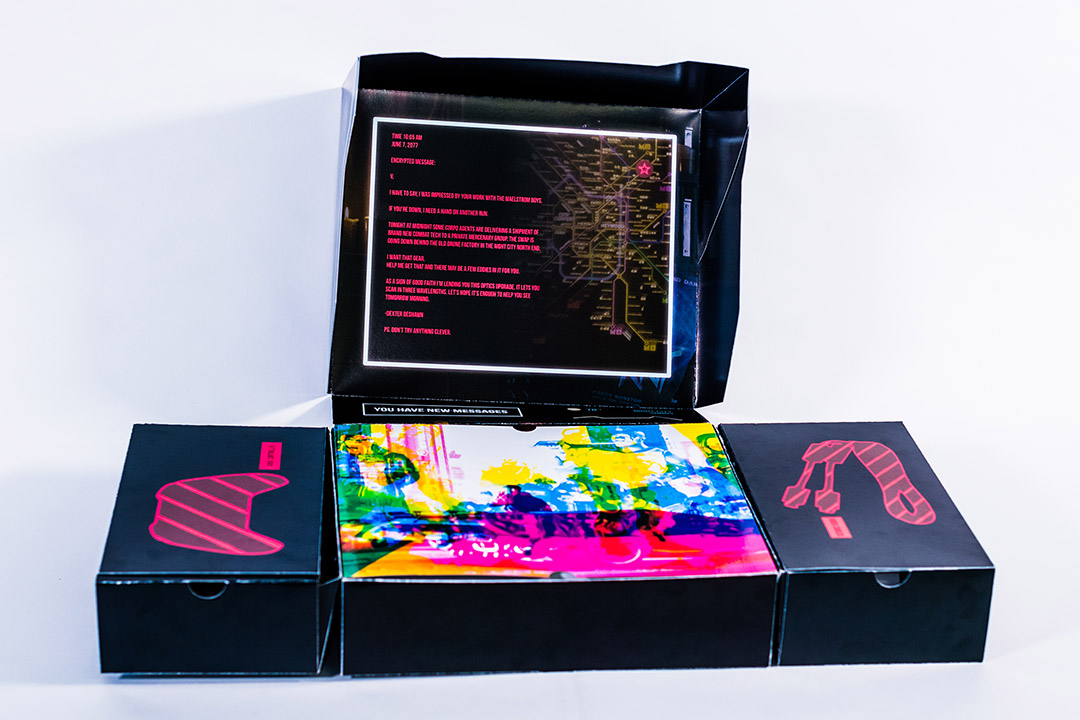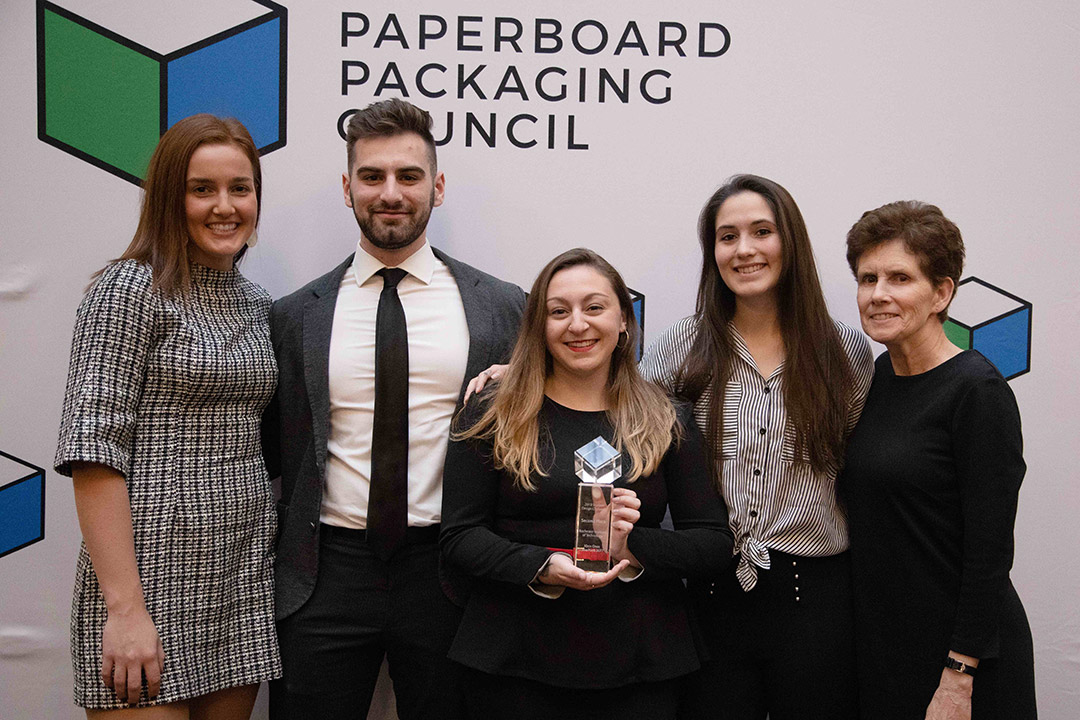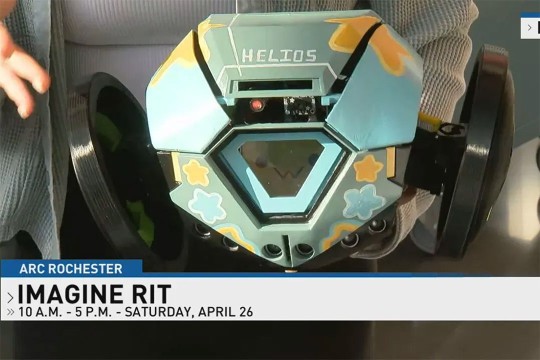RIT students place second in national packaging design competition
Multi-disciplinary collaboration between packaging science, industrial design and graphic design students continues to reap rewards
Team Pacman is (left to right) Kelly Fellner, Chris Flemming, Monica Steelman and Torry Dickman. Lorrie Frear (far right), faculty member in RIT’s School of Design, accompanied the students to the Paperboard Packaging Council annual meeting where the team was recognized for its contemporary design.
Team Pacman, a group of undergraduate students from Rochester Institute of Technology, placed second among 54 entries from competing universities in the recent Paperboard Packaging Alliance’s national Student Design Challenge.
 Team Pacman, a group of RIT students from industrial and graphic design and packaging science programs, developed a winning entry for today’s video gaming consoles as part of a national competition.
Team Pacman, a group of RIT students from industrial and graphic design and packaging science programs, developed a winning entry for today’s video gaming consoles as part of a national competition. Students from RIT’s packaging science, industrial design and graphic design programs were recognized for their winning entry, XBOX One S Cyberpunk, a packaging design for today’s video gaming systems. They were one of three teams that presented their design solutions to executives from top North American paperboard packaging manufacturers at the Paperboard Packaging Council’s annual fall meeting in Minneapolis, Minn.
Each year, the challenge is different and a way to help students understand both industry trends and consumer needs. This year, students designed packaging for a gaming system that enhanced the unboxing experience and featured innovative functions that can be used while playing the video game. Packages had to integrate sustainable materials and be designed to protect and secure products during shipping and handling. Student teams must also detail how designs enhance brand recognition and influence users to become loyal customers. Winner were chosen by a team of paperboard packaging industry professionals.
Team Pacman is Monica Steelman, a third-year graphic design student from Fairport, N.Y; and Kelly Fellner, a third-year packaging science major from Lancaster, N.Y. Teammates Torrey Dickman, from Hudson, N.H., and Chris Flemming, from Woburn, Mass., graduated from RIT in May 2019 with degrees in graphic design and industrial design, respectively. The team project was based on Cyberpunk 2077 and inspired by the roll-playing game’s graphics and futuristic theme. Within the box, players would have access to a collector’s edition game poster and cybernetic eyeglasses to enhance the game experience through scanning technology to uncover a variety of embedded codes for the game.
“The whole game is about discovering and problem-solving and solving missions, so we wanted people to get the feel of curiosity before they open it,” said Flemming, during the team’s presentation in spring.
Packaging Design, a spring semester course for senior and graduate-level students at RIT, is one of the longest running, cross-college collaborations where the focus is as much on a completed design as it is on bringing together, in an academic setting, the understanding of what it takes for a team to bring packaged goods to market. The Paperboard Packaging Alliance challenges are not industry specific; the majority are focused on current trends, with recent competitions charging students to design packaging solutions for brand subscriber boxes to fitness equipment.
RIT has been successful in providing this real-world platform for students to prepare for workplace responsibilities on teams, said Lorrie Frear, professor in the School of Design in RIT’s College of Art and Design.
“This competition is such a fantastic collaborative and real-world experience for our students,” said Frear, who co-teaches the Packaging Competition project with Carlos Diaz-Acosta, associate professor of packaging science in RIT’s College of Engineering Technology, during spring semester.
All student designs from the course are entered in the annual competition. Winners had been recognized during the annual Pack Expo, an international packaging trade show. For the second year, the top three teams were flown to the fall meeting of the Paperboard Packaging Council where each team presented its design process to corporate leaders and met potential employers in the paperboard packaging industry.
Winning student teams share a cash award, and their respective schools receive a cash prize to support academic programs. RIT’s second place team received $3,300; the packaging science program received $3,000. RIT has competed in the challenge since it began 15 years ago, and its teams have placed in the top five consistently, with several top overall finishes.
“The PPA Student Design Challenge provides students an invaluable, real-world product development experience that results in a tangible package to add to their professional portfolio,” said Heidi Brock, American Forest & Paper Association president and CEO, co-sponsors of the challenge. “It is energizing to see young designers contributing to paperboard packaging innovations through teamwork, determination and creativity.”












